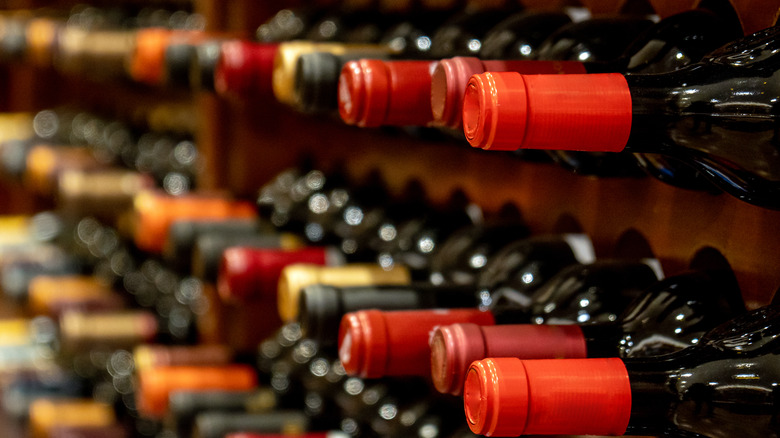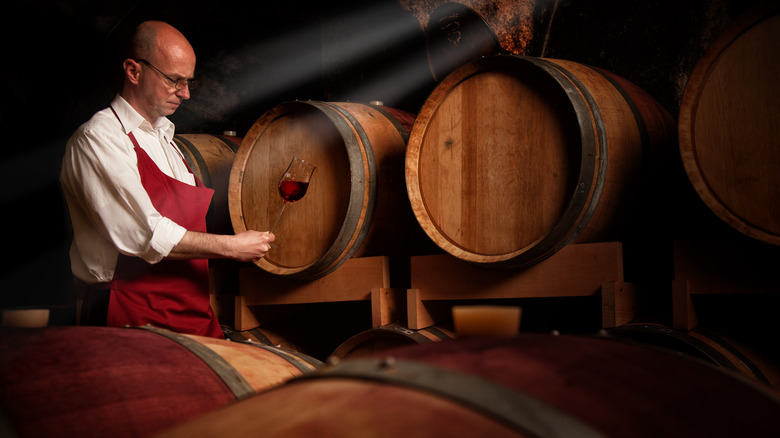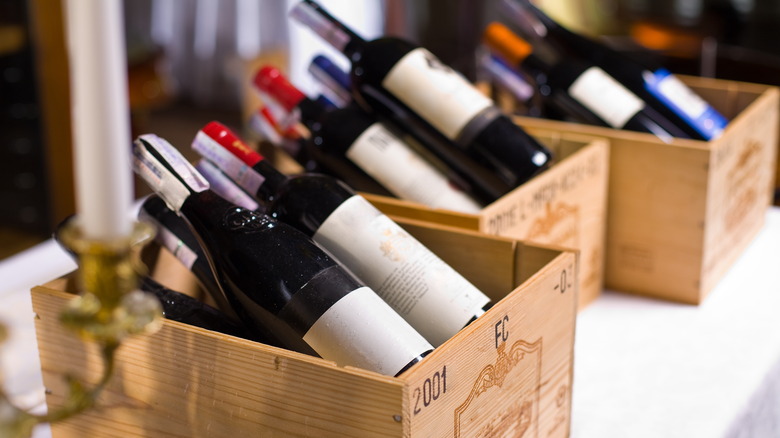What It Means When A Wine Bottle Is Labeled 'Reserve'
If you've ever gone wine shopping, chances are you've noticed that a limited number of bottles will be marked with the word "reserve" (or perhaps "reserva" or "riserva" if the wine hails from a country like Spain or Italy). If your instincts told you that these wines are higher quality, that's sort of correct, but it's not the whole story.
Historically speaking, the "reserve" marker comes from Europe, where it was used to designate wines that were likely to age well, often having been made during top-quality years for grapes (a good "vintage," in viticultural terms). The idea was that the wines would be reserved for aging and sold at a later date. Nowadays, reserve still tends to refer to wines that have been aged for longer periods of time, including in oak barrels. They'll tend to have a higher alcohol percentage, more tannins, and — overall — a more complex, nuanced flavor. However, be warned: This is a very general definition. In reality, the term can be used quite broadly, where it can refer to very specific rules about aging, or even nothing at all, depending on where a wine comes from.
Where reserve gets complicated
If you assume that all "reserve" wines are guaranteed to be great, you'd be wrong. Some critics have described it as a "meaningless" word, because there aren't always rules on what it actually means. In some wine-producing countries like Australia, there's no particular meaning tied to the word, so it can be slapped on any bottle (perhaps with a fancier label) as a marketing ploy to make it look better, or so that the winemaker can bump up the price tag a little bit.
On the other hand, some countries do impose rules on the word, particularly European countries. In Spain, "reserva" red wines must be aged for three years, with at least a year of that happening in an oak barrel (for white wines, it's two years of aging). There are also other categories like "gran reserva" with their own rules. Of course, there's no guarantee that wines with these labels are good quality, since it's still possible to make a wine with lousy grapes and age it enough to earn the "reserve" label. However, one can hope that they're at least better than average, since aging tends to improve a wine.
What to look for in a reserve wine
While the "reserve" label may indicate a better wine, it's still worth doing some extra research before throwing down money for it. Pay attention to the country of origin, and if the wine is from countries like Australia, the U.S., and France where "reserve" has no legal meaning, take it with a grain of salt. In Spain, Italy, and Portugal, you can trust it a little more, since there are rules. But there are other clues you can use to figure out if a wine is good quality beyond leaning on the unreliable "reserve" marker.
Firstly, look out for other, more precise details about the wine on the bottle. For example, if the label explicitly mentions how long the wine was aged, or if it was aged in oak, that's a good sign. It may be worth looking for the word "estate" on a bottle: This means that the wine was produced entirely by grapes from one winery, indicating that the company is willing to stake its name on the wine's quality, by taking full responsibility for production (of course, this isn't a guarantee, but just a clue that might help). If you're able to taste the wine, a real reserve wine should have a smooth texture, mellower taste and scent, and a softer red color. Finally, if you're at a winery or a store with knowledgeable staff, you can ask directly why a certain wine has the "reserve" label.


